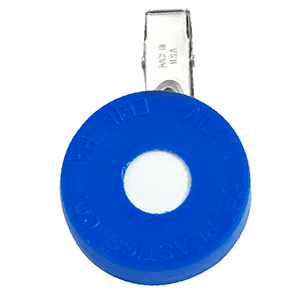Dental Workers
ACS monitoring badge is the most cost effective monitoring solution for dentists, dental assistants, or hospital workers who work in environments where there is an occupational risk of exposure to Nitrous Oxide.
Proven Performance:
According to the research conducted by American Dental Association, ACS Nitrous Oxide Monitoring badge was the most accurate Nitrous Oxide monitoring badge available in the market. (data sheet)
- Same badge for 15 minute (STEL) or 8 hour sampling (TWA).
- All inclusive Price for Badge, Analysis and Report
- Report by Phone, Fax or email – Original report by mail.
- Meets OSHA and NIOSH Accuracy Requirements.
- Validated Analytical Methods
- AIHA-LAP, LLC and New York ELAP Accredited Laboratory-Fully Reviewed QA/QC Procedures
- ACS Vapor Monitors have been used for 30 years in US and many foreign countries.
American Dental Association states:
Nitrous oxide continues to be a valuable agent for the control of pain and anxiety. However, chronic occupational exposure in dental offices not using scavenging systems may be associated with possible deleterious neurological and reproductive effects. This report outlines recommendations for controlling nitrous oxide exposure that were made by an expert panel convened by the ADA.
How it works:
The ACS badge sampling involves no liquid and mechanical pumps. Workers can clip the badge near the breathing zone to measure personal exposure or place it in a room to measure area concentration. Record stop time and end time. Mail the badge to ACS Lab in the envelope provided. The analysis reports are available within 48 hours after the samples have been received.
Monitoring Protocol
Periodic monitoring of personnel and room concentration is recommended to monitor workers who are exposed to harmful chemicals.
The general OSHA protocol for personal exposure monitoring is to do two tests more than one week apart. If both results are low, then periodic testing should be done at intervals no more than one year apart. In a one-year period each person who is exposed to the chemical as a regular part of their job should be tested.
Quality Assurance Procedures:
The American Dental Assoc. has done an evaluation of the Nitrous Oxide Monitor badge. Their data indicates that it meets the accuracy requirements for personal exposure and room monitoring. Part of the quality assurance includes laboratory instrument calibration prior to analysis for field samples. Analysis of Sample “spike” prior to analysis of field samples. Maintenance of control chart for calibrations. No analysis performed if results are out of control by deviation by more than 2ï³ from the average of past results. Analysis of lab “blank” with each group of field samples to test for positive bias. Periodic measurement of collection rate. The collection rate had not significantly changed in at least 10 years.

